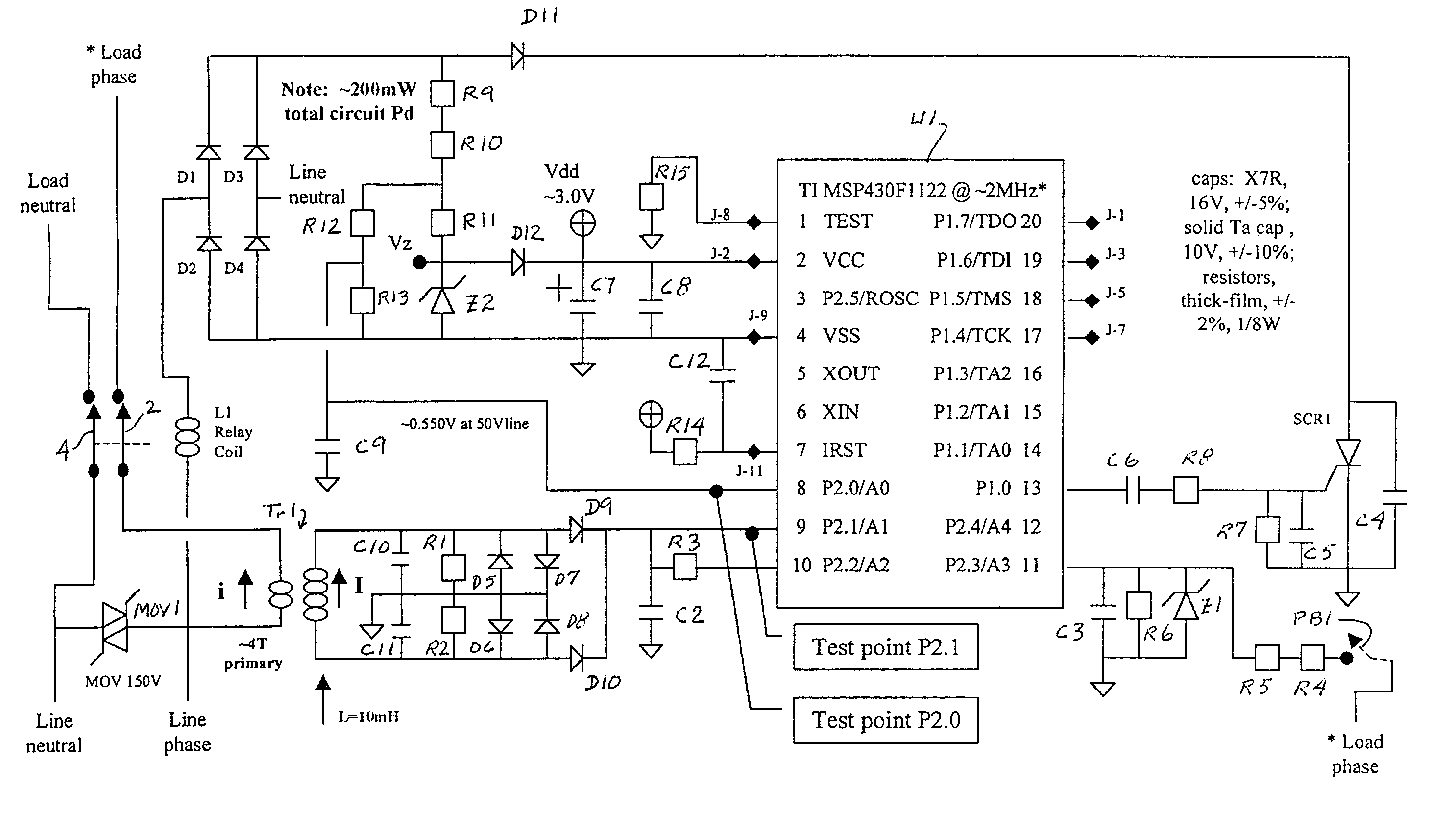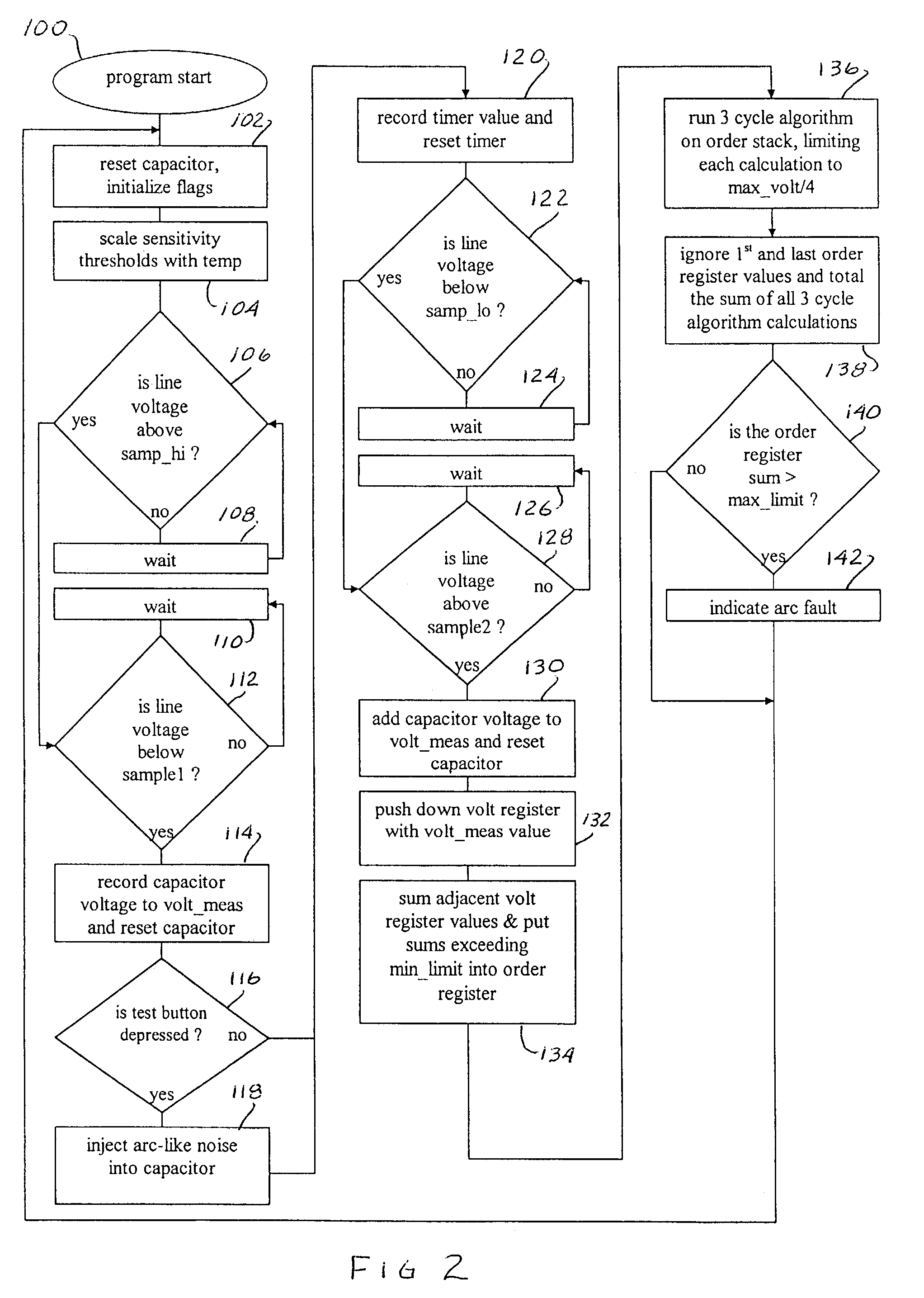Arc detection apparatus and method
a detection apparatus and arc technology, applied in the field of electric circuits, can solve the problems of low signal processing efficiency, high cost, and high cost of all three approaches, and achieve the effect of low cost and simplified signal processing
- Summary
- Abstract
- Description
- Claims
- Application Information
AI Technical Summary
Benefits of technology
Problems solved by technology
Method used
Image
Examples
Embodiment Construction
[0020]With reference to FIG. 1, relay coil L1 is connected to line phase and is arranged to control the state of energization of main contacts 2, 4 which either connect or separate the main line neutral and line phase to or from the load neutral and load phase line, respectively. Normally, power in the coil is low enough that the relay contacts remain closed. When SCR1 is turned on, however, as will be described, current increases in the relay coil to open the contacts. Metal oxide varistor MOV1 is connected between line neutral and line phase to prevent excessive line voltage.
[0021]Current flowing through a load is monitored by a transformer Tr1 comprising roughly three turns of a primary coil and several hundred turns of a weakly coupled secondary coil, that is, a coupling having low mutual inductance on the order of 20–50 micro Henrys, in order to transfer high frequency components of the primary current to the monitoring circuit. The secondary current is rectified and fed to a l...
PUM
 Login to View More
Login to View More Abstract
Description
Claims
Application Information
 Login to View More
Login to View More - R&D
- Intellectual Property
- Life Sciences
- Materials
- Tech Scout
- Unparalleled Data Quality
- Higher Quality Content
- 60% Fewer Hallucinations
Browse by: Latest US Patents, China's latest patents, Technical Efficacy Thesaurus, Application Domain, Technology Topic, Popular Technical Reports.
© 2025 PatSnap. All rights reserved.Legal|Privacy policy|Modern Slavery Act Transparency Statement|Sitemap|About US| Contact US: help@patsnap.com



